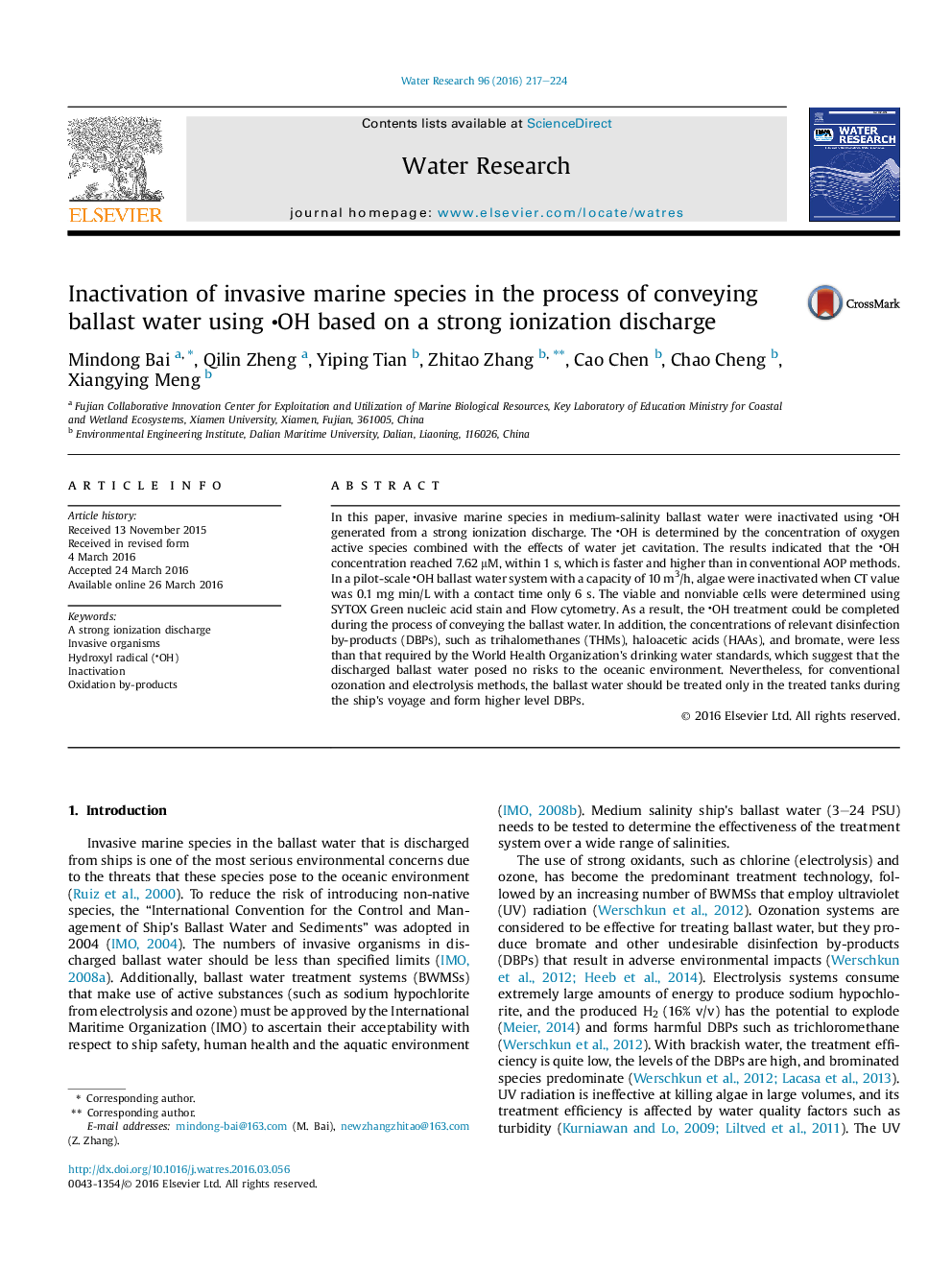| کد مقاله | کد نشریه | سال انتشار | مقاله انگلیسی | نسخه تمام متن |
|---|---|---|---|---|
| 4480919 | 1623072 | 2016 | 8 صفحه PDF | دانلود رایگان |
• The oxygen active species (OASs) were produced by a strong ionization discharge.
• The OH is determined by the OASs combined with the effects of water jet cavitation.
• The inactivation CT value was only 0.1 mg min/L.
• The OH inactivation could be completed during the process of conveying the ballast water.
• The DBPs were less than the WHO drinking water standards.
In this paper, invasive marine species in medium-salinity ballast water were inactivated using OH generated from a strong ionization discharge. The OH is determined by the concentration of oxygen active species combined with the effects of water jet cavitation. The results indicated that the OH concentration reached 7.62 μM, within 1 s, which is faster and higher than in conventional AOP methods. In a pilot-scale OH ballast water system with a capacity of 10 m3/h, algae were inactivated when CT value was 0.1 mg min/L with a contact time only 6 s. The viable and nonviable cells were determined using SYTOX Green nucleic acid stain and Flow cytometry. As a result, the OH treatment could be completed during the process of conveying the ballast water. In addition, the concentrations of relevant disinfection by-products (DBPs), such as trihalomethanes (THMs), haloacetic acids (HAAs), and bromate, were less than that required by the World Health Organization's drinking water standards, which suggest that the discharged ballast water posed no risks to the oceanic environment. Nevertheless, for conventional ozonation and electrolysis methods, the ballast water should be treated only in the treated tanks during the ship's voyage and form higher level DBPs.
Schematic of OH ballast water treatment system with a capacity of 10 m3/h.Figure optionsDownload high-quality image (179 K)Download as PowerPoint slide
Journal: Water Research - Volume 96, 1 June 2016, Pages 217–224
